
Tomahawk
Mark Pajak recalls one of the first sims from Digital Integration.
Some of the screenshots in this exhibit were obtained from Jasper, the on-line Spectrum emulator by Adam Davidson and Andrew Pollard. Jasper lives at http://www.spectrum.lovely.net
MiGMan thanks Mark Pajak for these recollections.
❝
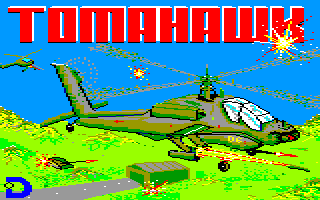
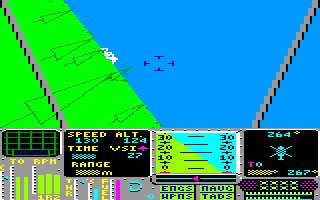
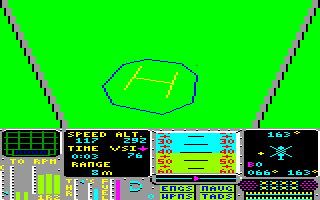
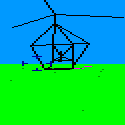

Mountains
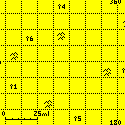
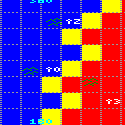
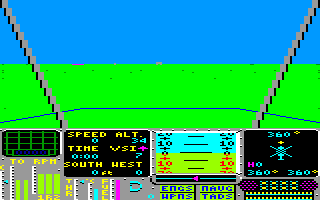
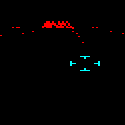
FLAK at night
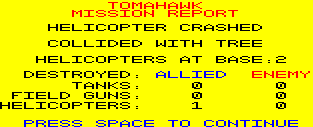 ❞
❞
History
Back in the early eighties a couple of Englishmen left their programming jobs with the Royal Air Force and in 1984 established their own company called Digital Integration. Their goal was to develop complex flight simulations for home computers that would be very advanced in flight modeling accuracy, graphics and attention to detail. MiGMan thanks their experience developing simulations for the RAF the enterprise got off to a very good start.
In 1986 DI released Tomahawk, a simulation of the US Army Apache attack helicopter. It was original, the first of its kind and offering a good balance of simulation accuracy, playability and graphics, all despite the limitations of the target platform, the shockingly primitive 48K Spectrum. The game was later ported to other platforms including Amstrad and Atari 800/130XE and enjoyed a significant fan following.
Simulation
The simulation Because of the limitations of contemporary computers (and the lack of experience among contemporary programmers) the weapons' and navigation systems bore only a superficial resemblance of those in the real helicopter. Nevertheless, they were quite complex and required a careful study of the manual in order to understand their intricacies. They included
- a "TV display" for visual identification and "lasing" of targets
- moving map display
- digital artificial horizon
- a horizontal situation/navigation display
- warning panel (for damage control)
- ordnance display
- flight instruments
- engine controls and so forth.
The weapons were a lot of fun back in 1986 and included 30 mm cannon, unguided FFAR missiles and of course, Hellfire laser-guided rockets. All systems and weapons could become damaged by enemy fire, up to and including the loss of engine power. With one engine gone the helicopter could limp Back to base, but after the loss of both the only action possible was crash landing on autorotation. Few Tomahawk pilots succeeded in that difficult maneuver.

The DI Apache flew and handled well, but it was unforgiving. It took a lot of time getting used to because scarcity of ground detail made it quite difficult to correctly judge the helicopter's attitude and velocity. In addition, the controls for collective, cyclic and engine RPM were separate, tricky to control with the keyboard, and the cryptic instrument readout required much attention, especially during landing.

The experience could be made more challenging by switching to night flying, increasing winds and turbulence or lowering the cloud layer. Of course, it was 1986 and one could see no clouds! After entering the cloud layer the pilot simply lost all visual contact with the outside world and had to either fly blind or descend to an appropriate height.

Visuals
The Visuals Tomahawk's world was exciting to the 1980's computer pilot.

There was a variety of objects, such as mountains, forests, towers and landing pads. There were three types of friendly and enemy targets, including tanks, AAA cannons and helicopters. All objects were completely transparent wire-frame polygons without texture, but they behaved according to the rules of perspective and appeared very convincing from behind the controls of the helicopter. In addition, Digital Integration employed a previously unknown trick of strewing the "earth" with clumps of pixels to simulate grass and rocks. Their movement created an exciting sensation of ground motion that was unmatched in competitors' games.

Mountains
Epilogue
In 1996 Digital Integration (still owned and run by the same people who had started it ) released a new helicopter simulation. It was called Hind and it was brilliant.
Interestingly, the handling characteristics and flight modeling of Hind bore a striking resemblance of its 1986 grandfather. In fact, to the author the simulation felt like Tomahawk with new graphics pasted onto it. Hind had multiple views, fancy digital video, a lively and complex outside world, but the "soul" of Tomahawk appeared to be still there hidden under the layers of new simulated systems. Was it just a coincidence or a result of purposeful action on the part of the programmers? I don't know but would sure like to ask them about it.
Mark Pajak
March 4, 2000




FLAK at night

